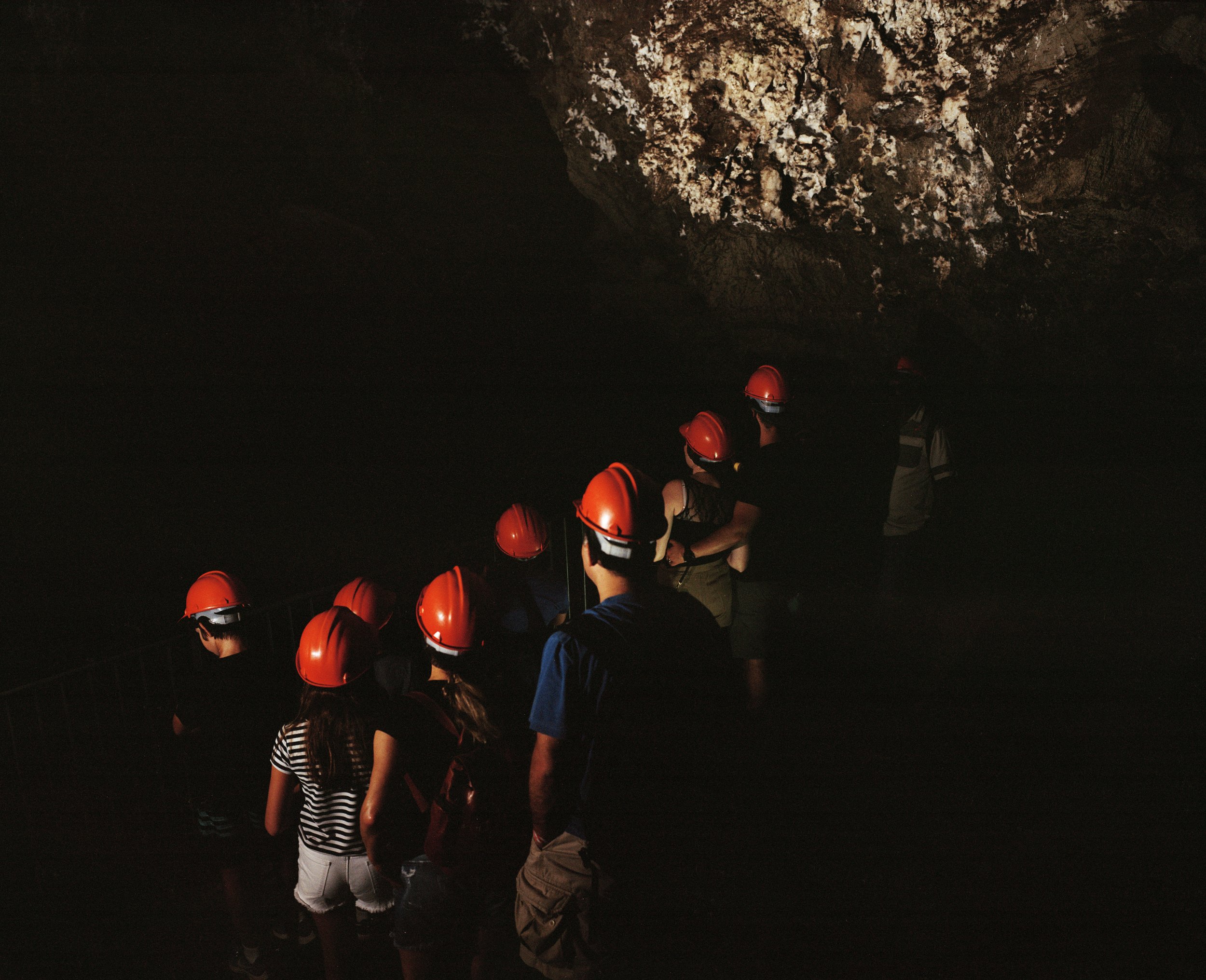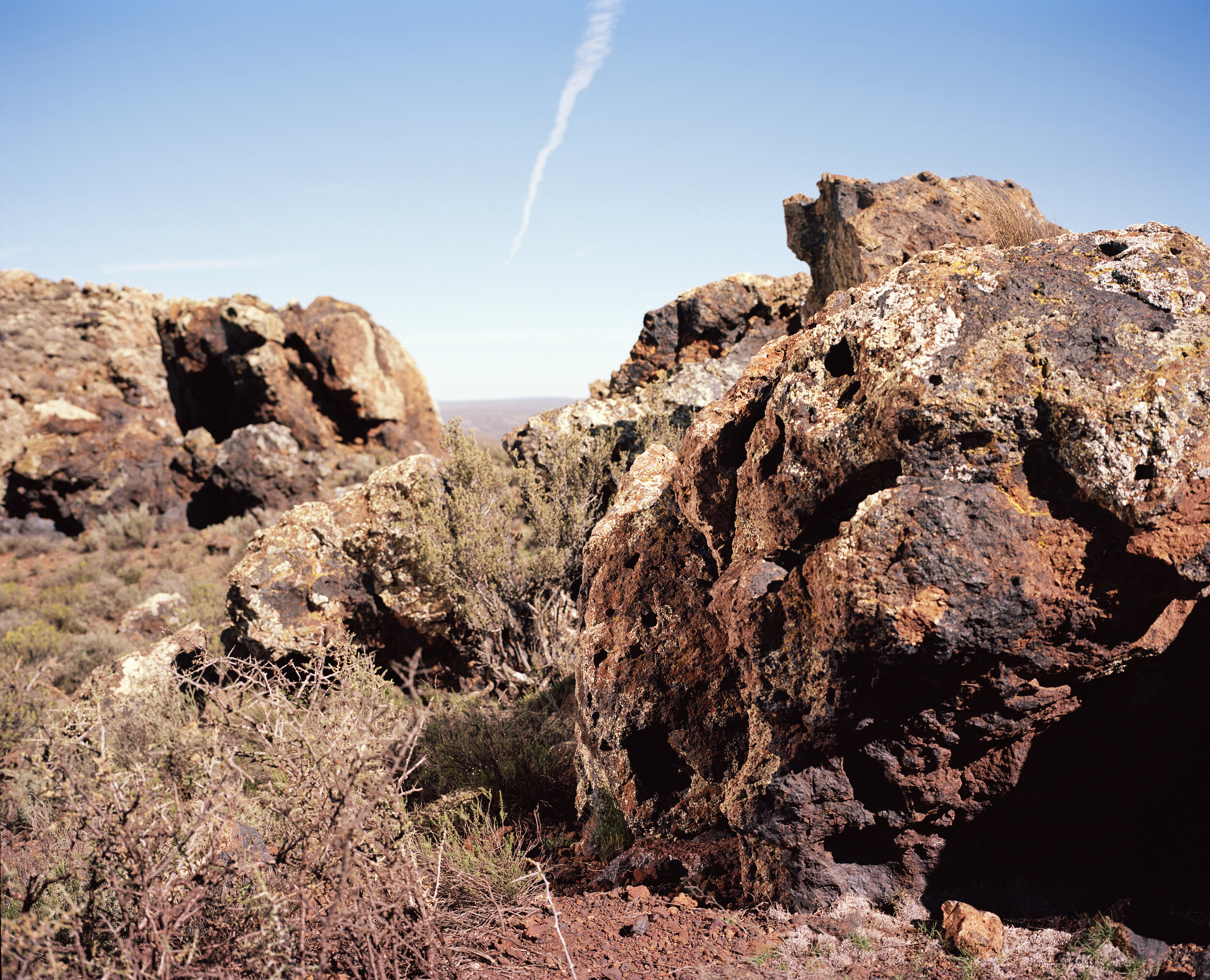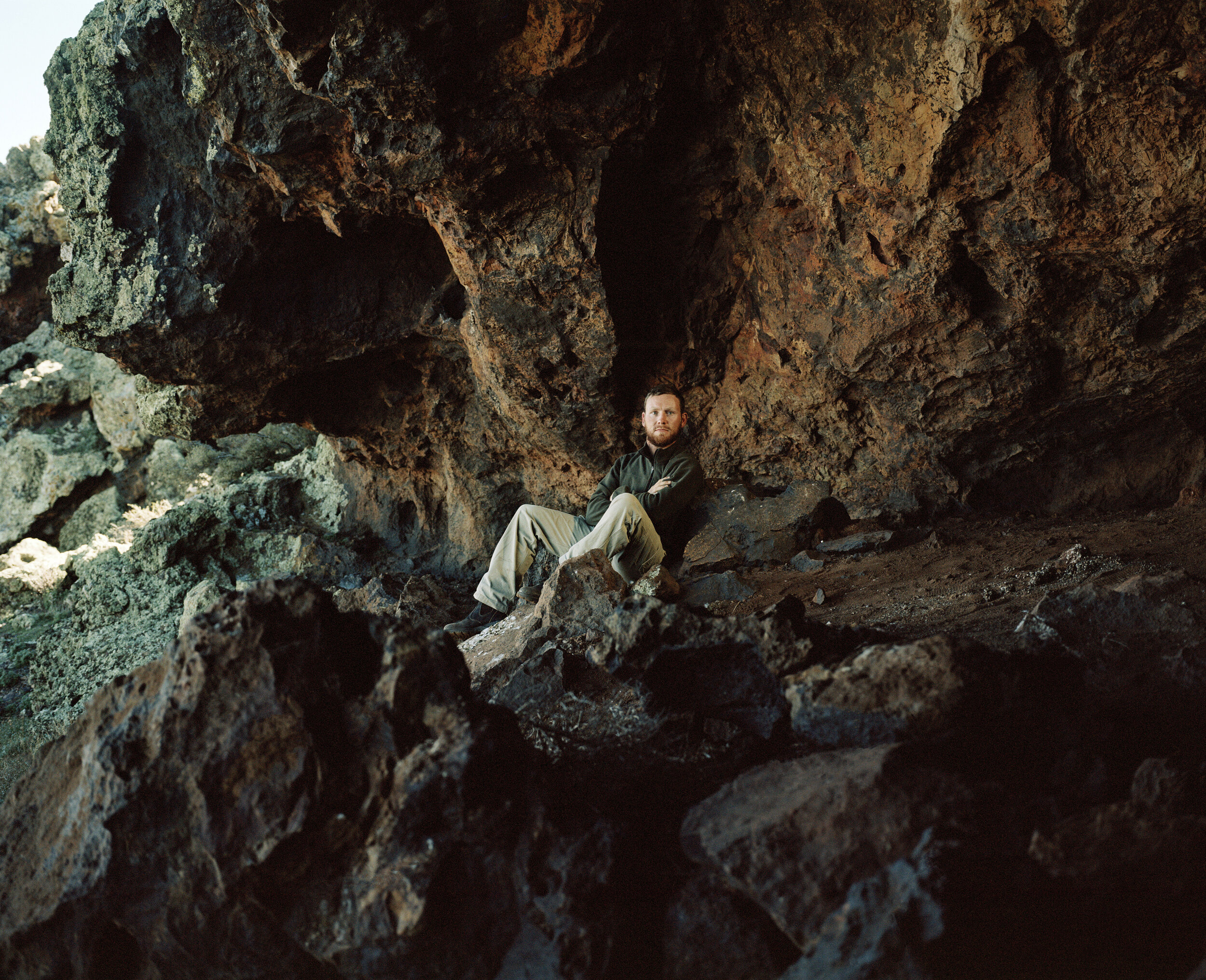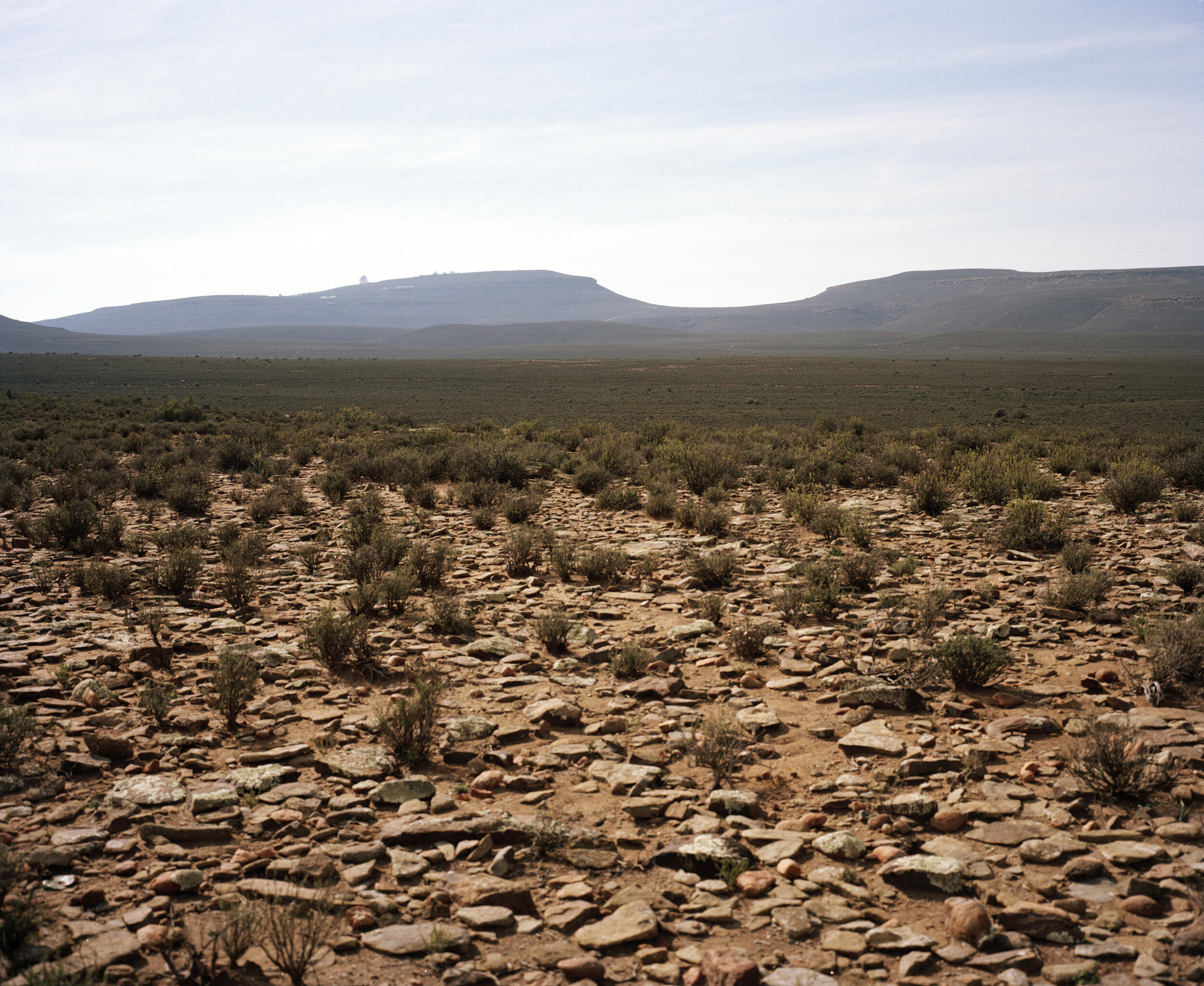‘But I was never in the Earth room yesterday!’ Says Marie indignantly. ‘You are imagining it!’
From Die Hemelblom (The Heaven Flower) by Jan Rabie, 2nd edition 1974, Tafelberg, first published 1971. Translated from the original Afrikaans.
The Hemelblom was sent to the earth by a concerned galactic council to ensure the survival of life on earth in the face of a new world war. The plant was specifically grown to remove the poisonous elements introduced by humans - feeding on pollution it would rapidly cover the earth and wipe out most of humankind but leave a new earth covered with fresh fertile soil.
These cliffs are always reminding us of the ‘End of the Earth’ - here indeed ends, it seems like it just falls into the deep dark sea.
‘The time: Just before the end of the 20th century, just after the first human feet touched the moon and Mars.
The place: Somewhere in the Southwest Karoo on the highest level of the big empty table land where the world's largest observatory has been standing since the first human generation… This whole complex of highly specialized activities is known as Saakni, the South —African Cosmic Research Institute, a secret, forbidden world, set apart by a twenty-kilometer-wide buffer strip, guards and laser beams.’
Photograph inspired by ‘Swart ster oor die Karoo’ (Black star over the Karoo) by Jan Rabie, 1957. the Saankni institute is underground, and becomes a safe haven for humans after the Earth stops turning and the surface becoms unbearably cold.
'Who or whatever is busy there especially chose this meandering gorge.' From Sending Kosmos, ID Lamprecht, 1980. Daan Retief Publishers, 1980. (Translated from the original Afrikaans)
Traveling beyond the speed of light in a rocket that took off from a secret location in Gamkaskloof, Professor Verhoef and Hansie Strydom start remembering events from the future. They somehow know that the star they are heading towards is called the Verhoef Sun and one of it’s planets Strydom.
Salpeterkop (Saltpetre Hill) was an active volcano around 66 million years ago – estimated as the last one in Southern Africa. It is interesting to note that about 2 km of of its original height has been eroded down, so we are seeing at a level 'deep in the throat of the volcano'. The remains of this volcano is visible from the SALT (South African Large Telescope) site near sutherland.
'They stared, and then see it taking on a form …a lump to the left, and flat in the middle, and a pointed, smaller peak to the right. Yes, yes. Table Mountain between Devil's Peak and Lion's Head. For a moment they were overwhelmed with real joy, before the paralysis return. What terrible tragedy happened here? There are no traces of a city anymore, just ice. It is Jordaan who sees it first, a small glossy lump above the ice, a structure like a glass dome. There they will probably land.'
Photograph inspired by ‘Swart ster oor die Karoo’ (Black star over the Karoo) by Jan Rabie, 1957. In the novel future humans are living inside Table Mountain as it is too cold outside.
'They stared, and then see it taking on a form …a lump to the left, and flat in the middle, and a pointed, smaller peak to the right. Yes, yes. Table Mountain between Devil's Peak and Lion's Head. For a moment they were overwhelmed with real joy, before the paralysis return. What terrible tragedy happened here? There are no traces of a city anymore, just ice. It is Jordaan who sees it first, a small glossy lump above the ice, a structure like a glass dome. There they will probably land.'
Photograph inspired by ‘Swart ster oor die Karoo’ (Black star over the Karoo) by Jan Rabie, 1957. In the novel future humans are living inside Table Mountain as it is too cold outside.
In 2011 the deepest land living creature was discovered inside a South African gold mine. A new species of nematode worm Halicephalobus mephisto was found 3.5km below the surface. They thrive in conditions thought to be too harsh for any creature - where previously it was thought that only single-celled bacteria survive.
The discovery has also encouraged the search for life on other planets with the possibility of more creatures surviving underground.
Salpeterkop (Saltpetre Hill) was an active surface volcano about 66 million years ago – believed to be the last one in South Africa, making it the youngest known active volcano in Africa south of the Equator. When viewing this structure today, it must be remembered that about 2 km of rock has been eroded away, so we are looking at a level deep in the throat of the volcano. Its present summit is reached via a kilometre-wide lava ash field.*
Our consideration of what is large and what is small is constantly provoked as we experience the many details of the landscape. Even then as we use ourselves as a type of scale and our bodies are in turn observed by the landscape - it all becomes a loop of relativity. From the mere thought of what we consider the smallest atomic parts to the imagining of other distant heavenly bodies without measure.
‘Knersvlakte’, literally translated from Afrikaans means “gnashing plain”. The name is said to originate from the crunching sound made by contact with the white, quartz-rich gravel. The quartz also reflects the sunlight, which makes the rocks and soil cooler in temperature than surrounding areas. This unique condition has allowed a large number of endemic plants to proliferate - many of these are small succulents that can absorb heat during the long and dry summers.
These rocks contain a high percentage of iron and their dark appearance forms a truly ancient landscape. The rocks make a metal sound when played; they are referred to with different names such as ‘rock gongs’, ‘ringing rocks’ or even ‘bushman pianos’. Found in various areas around the world and Africa, tradition formed around communicating with the help of the rocks - evident by the ancient drumming marks often found on them.
“For me, my identity is basically the person I’m accepting myself to be and who I believe I am. I don’t think I would identify myself as Xhosa or Tswana, I don’t think I would identify myself as coloured either. My father is coloured and everything in my genes I believe is more connected to an African lifestyle - which includes the Xhosa and Tswana. But currently, I’m the person I believe I am - that is my culture.”
Liezel is employed from twelve years in the museum of the living landscape project, that conceived around the idea of the Cederberg landscape as a time machine, that visitors can ‘travel’ through using the wealth of archaeological material continually discovered on site: structural remains, plants, animals etc.. the legacy of the San, the old Inhabitants of the area. The project looks at the astrological mythology of San people.





























